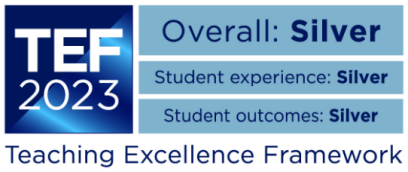HND Digital Technologies - Software Development and Programming (HTQ)

Are you ready to dive into the world of digital software programming and unleash your creativity in the digital realm? Whether you’re a beginner with no prior programming experience or an experienced coder looking to expand your skill set, our HND Digital Technologies - Software Development and Programming (HTQ) course is designed to accommodate learners of all levels.
- Level
- 5
- Entry Point
- Sep 2025
- Duration
- Full Time, 2 years
- Venue
- City College Norwich campus
- CCN Course Code
- F0094
Reasons to study
this course
The purpose of Pearson BTEC Higher Nationals is to develop you as an independent-thinking professional who can meet the demands of employers and adapt to a constantly changing world. Higher Technical Qualifications (HTQs) are highquality, job-focused qualifications that have been approved as delivering the skills employers need. Our HTQs are designed with the employer’s needs in mind and will help learners train or retrain for highly-skilled jobs within key technical sectors.
The Level 4 units lay the foundation of learning by providing a broad introduction to digital technologies and to a range of digital technology specialist functions. This develops and strengthens core skills, while preparing students to study specialist subjects at Level 5 or to enter employment with the qualities necessary for job roles that require some personal responsibility. You will gain a wide range of knowledge tied to practical skills gained through research, independent study, directed study and workplace scenarios. Students are involved in vocational activities that help them to develop vocational behaviours (the attitudes and approaches required for a competence) and transferable skills. Transferable skills are those such as communication, teamwork, research and analysis, which are highly valued in higher education and the workplace.
The Level 5 units give students the opportunity to specialise in a digital-technology related occupational area and to progress to degree-level study. The units prepare students to move on to specific areas of digital technologies at Level 6 or to enter employment with the qualities and abilities necessary for roles that require personal responsibility and decision making.
After studying a Level 5 Higher National Diploma in Digital Technologies students will have a sound understanding of the principles in their area of specialist study and will know how to apply them.
Simon Rhodes - HE Development Manager
My name is Simon, and I am the HE Development Manager. Prior to joining City College Norwich, I worked for 20 years in the aviation industry, including management roles within procurement, and technical training. I currently work with colleagues as part of the School of HE Leadership team to help develop our provision, and increasingly to manage our interactions with the Office for Students (OfS), who are the main regulator for Higher Education in England. I manage both the HE Office, and our HE Student Recruitment / Student Support teams, who work directly to support students. Please contact me if you have any questions about this course.
Where will this
course take you?
This programme is widely recognised by employers and professional bodies and can provide pathways to both further education and membership of relevant professional bodies.
Course structure
This course is studied full time over two years. The programme is delivered over two days a week - 30 teaching weeks per year.
Level 4 modules
Professional Practice in the Digital Economy Core
This unit provides a foundation for good practice in a variety of contexts and provides an opportunity for you to examine the evolution and impact of digital technologies on work environments. You will explore the importance of professional development for career success and the benefits of working towards goals for career success. In addition, problem solving extends the need to demonstrate transferable and communication skills. Finally, working with others is an integral part of everyday life and the ability to give and receive feedback is a necessary skill to support professional development planning. Therefore, understanding role responsibilities and how to work with peers and colleagues will ensure that there is a better understanding and awareness to support your own professional development.
Innovation & Digital Transformation Core
Many businesses manage to remain competitive by using their ability to adapt strategies and re-think their old operating models in response to fundamental changes in the market. Technology gives these organisations the opportunity to evolve and to increase their value to their customers; modern services are increasingly moving online – making digital transformation a necessity. In 2019, the global spending on digital transformation technologies and services grew around 18%. This unit aims to give you a comprehensive understanding of digital transformation.
Digital transformation constitutes the integration of digital technology into all areas of a business to maximise the Return on Investment (ROI) meaning that there will be fundamental changes to business operations and culture. In this unit, you will look at a number of tools and techniques that organisations use to transform and become more innovative in your approach. These include frameworks and related elements such as operational agility, culture, leadership, customer experience, and integration of digital technology.
Cyber Security Subject to change
Digital technologies provide an opportunity for malicious hackers and cyberterrorists to exploit individuals, government, institutions and large organisations. Defending against cyber-attacks, including insider threats, is a priority within the digital technologies sector. Cybercrime techniques and attack vectors are fast growing, taking advantage of the speed, anonymity and convenience of the internet as a facilitator for malicious and criminal activity.
This unit has been designed to develop your knowledge and understanding in relation to cyber threats and vulnerabilities, cyber defence techniques and incident response. You will explore fundamental principles as well as leading-edge concepts, terminologies, models and hardening methods. You will assess the types of malicious activity and potential targets, and the role everyone has in maintaining cyber resilience.
On successful completion of the unit, you will have explored the nature of cybercrime and cyber threat actors, looked into the roles and responsibilities in relation to information assurance, assessed the threats to, and vulnerabilities in, ICT infrastructure and investigated strategic responses to cyber security threats.
Programming Subject to change
Programming involves describing processes and procedures that are derived from algorithms. The ability to program is what sets apart a developer from an end user. Typically, the role of the developer is to instruct a device (such as a computer) to carry out instructions; the instructions are known as source code and are written in a language that is converted into something the device can understand. The device executes the instructions it is given.
Algorithms help to describe the solution to a problem or task by identifying the data and the process needed to represent the problem or task and the set of steps needed to produce the desired result. Programming languages typically provide the representation of both the data and the process; they provide control constructs and data types (which can be numbers, words and objects, and be constant or variable). The control constructs are used to represent the steps of an algorithm in a convenient yet unambiguous fashion. Algorithms require constructs that can perform sequential processing, selection for decision making and iteration for repetitive control. Any programming language that provides these basic features can be used for algorithm representation.
This unit introduces you to the core concepts of programming, along with an introduction to algorithms and the characteristics of programming paradigms. Among the topics included in this unit are: introduction to algorithms, procedural, objectorientated and event-driven programming, security considerations, the integrated development environment and the debugging process.
On successful completion of this unit, you will be able to design and implement algorithms in a chosen language in a suitable Integrated Development Environment (IDE). This IDE will be used to develop and help track any issues with the code. As a result, you will develop skills such as communication literacy, critical thinking, analysis, reasoning and interpretation, which are crucial for gaining employment and developing academic competence.
Big Data & Visualisation Subject to change
Exploring and analysing big data translates information into insight. The purposeful, systematic exploitation of big data, coupled with analytics, reveals opportunities for improved decision making and better business outcomes. All this data is useful when processed but requires visualisation to bring to life. Data visualisation makes big data easier for the human brain to understand and detect patterns, trends and meaning in complicated data sets. With such rapid advancement in this area, there have been considerable challenges for data specialists to develop the skills, experience and growth required to maintain innovation in the sector. Similarly, the public and private sectors have struggled to keep up with progress, meaning that the introduction of legislation and community norms have been retrospective and, at times, reactive.
As data continues to be the fuel for the digital economy, this area remains a constant topic of conversation for organisations and governments, and the public who share an interest in its growing commercial use, manipulation and presentation. This unit introduces you to the concepts of big data and visualisation and how this is used for decision making. You will explore the industry software solutions available for investigating and presenting data, before assessing the role and responsibility of data specialists in the current environment. You will examine topics including data-driven decision making, manipulating data and automation, and building ethics into a data-driven culture. You will demonstrate your use of tools and software to manipulate and prepare a visual presentation for a given data set. They will also assess how data specialists are responsible for adhering to legislation and ensuring data compliance.
On successful completion of this unit, you will be able to investigate the value of data for decision making to both end-users and organisations; compare how different industry leading tools and software solutions are used to analyse and visualise data; carry out queries to summarise and group a given data set, and analyse the challenges faced when building ethics into a data-driven culture. You will have the opportunity to progress to a range of roles in the digital sector and will develop industry-led skills, analysis, and interpretation, which are crucial for developing practical experiences with big data and for gaining employment
Networking in the Cloud Subject to change
Complex computer networking has connected the world via groups of smaller, linked networks to support global communications. These can be situated within ‘the cloud’, at home, with your employer or elsewhere. As a cloud computing professional, a question that must always be asked is ‘What remote and local networking infrastructure is supporting our cloud communication?’. The evolution of cloud computing is driven by all forms of network infrastructure allowing users to access data, hardware and services regardless of location. Being knowledgeable about the underlying principles of networking is of vital importance to all cloud professionals, whether they work in cloud support roles, cyber security or cloud software development.
The aim of this unit is to give you a wider background knowledge of cloud networking principles, operational principles, protocols, standards, security considerations and the systems associated with a range of networking technologies. This unit gives you the underpinning knowledge of the principles of networks and supports a range of other units in the qualification. You will explore a range of cloud solutions and will configure them to gain knowledge of networking systems. A range of networking technologies will be explored so that you gain a fundamental knowledge of Local Area Networking (LAN), Wide Area Networking (WAN) and their evolution, to form scalable systems.
On successful completion of this unit, you will have gained knowledge and skills to be able to successfully implement, operate and improve a cloud network and the operation of cloud-based data networks, including router, switching technologies, IP routing technologies, IP services and basic troubleshooting. You will develop skills such as communication literacy, critical thinking, analysis, reasoning and interpretation, all of which are crucial for gaining employment and developing academic competence.
Database Design & Development Subject to change
Organisations depend on their databases for providing information that is essential for their day-to-day operations and to help them take advantage of today’s rapidly growing and maturing e-commerce opportunities. An understanding of database tools and technologies is an essential skill for designing and developing systems to support them.
As applications get increasingly more sophisticated, database systems continue to demand more complex data structures and interfaces. Most organisations collect and store large volumes of data, either on their own systems or in the cloud, and this data is used not just for the operational running of their business but is also mined for other more intelligent and complex applications. Databases stand as the back-end of most systems used by organisations for their operations. Database design and development is a fundamental and highly beneficial skill for computing you to master, regardless of your specialism.
The aim of this unit is to give you opportunities to develop an understanding of the concepts and issues relating to database design and development. It will also provide the practical skills needed to be able to translate that understanding into the design and creation of complex databases.
Topics covered in this unit are: examination of different design tools and techniques; examination of different development software options; consideration of the development features of a fully-functional robust solution covering data integrity, data validation, data consistency, data security and advanced database querying facilities across multiple tables; appropriate user interfaces for databases and for other externally linked systems; creating complex reports/dashboards, testing the system against the user and system requirements; and elements of complete system documentation.
On successful completion of the unit, you will be able to use appropriate tools to design and develop a relational database system for a substantial problem. They will be able to test the system to ensure that it meets user and system requirements, and fully document the system by providing technical and user documentation. For practical purposes, this unit covers relational databases and related tools and techniques. A brief overview of object-oriented databases will also be covered. As a result, you will develop skills such as communication literacy, critical thinking, analysis, reasoning and interpretation, which are crucial for gaining employment and developing academic competence.
Software Development Lifecycles Subject to change
The software development lifecycle is an integrated process that promotes building good quality, secure software throughout the entire development process. The aim of this unit is to give you the knowledge and skills needed to understand software development lifecycles so that you can demonstrate your knowledge by implementing a software development lifecycle with a suitable methodology.
The unit introduces you to lifecycle decision making at different stages of the software development process. You will examine various lifecycle models and learn to appreciate their particular characteristics in order to understand for which project environments they are most appropriate. Theoretical understanding will be translated into practical skills through an actual software development lifecycle project. You will become confident in the use of particular tools and techniques relevant to a chosen methodology.
Among the topics included in this unit are iterative and sequential models of software development lifecycles and reference frameworks for initially capturing conceptual data and information through a feasibility study, and requirement gathering techniques through to analysis, design and software implementation activities.
You will develop skills such as communication literacy, critical thinking, analysis, reasoning and interpretation, which are crucial for gaining employment and developing academic competence.
Level 5 modules
Business Intelligence Core
Modern business intelligence focuses on having a comprehensive view of an organisation’s data and to then use that data to drive change, eliminate inefficiencies, and quickly adapt to market or supply changes. The necessity of having meaningful information is the key driver for effective decision-making and problem-solving. Business intelligence can help companies make better decisions by showing present and historical data within their business context. Business intelligence has evolved from technologies such as decision support systems (DSS) to include tools and methods associated with data mining, data integration, data quality and data warehousing in conjunction with other information management systems and applications.
This unit introduces you to a range of tools, techniques and technologies for acquiring data and processing this into meaningful information that can be used to support business functions and processes. Within this unit you will examine the concept of business processing in terms of data capture, conversion and information output. You will also be required to define the tools and technologies associated with business intelligence functionality. You will develop a business intelligence tool and demonstrate techniques to understand a given problem. Finally, you will be expected to evaluate the impact of business intelligence for effective decision-making.
On successful completion of this unit you will be able to appreciate the importance of business intelligence in terms of optimising decision-making and performance. By exploring the tools, techniques and systems that support business intelligence you will have an awareness of the role and contribution that these technologies and methodologies have and their importance to organisations. As a result you will develop skills such as communication literacy, critical thinking, analysis, reasoning and interpretation, which are crucial for gaining employment and developing academic competence.
Internet of Things Core
The Internet of Things (IoT) is a network of physical objects – devices, vehicles, drones and other objects embedded with electronics, software, sensors and network connectivity – that enables those objects to collect and exchange data. The objective of the IoT is to enable almost any object to become smart, accessible and data capable, thereby benefitting from advances in communications, computation and interconnectivity. IoT explores the mixture of hardware, software, data, platforms and services that can be combined to create innovative opportunities for more direct integration of the physical world and objects into computer-based systems, resulting in improved efficiency, accuracy and social and economic benefits.
This unit introduces you to the role, basic concepts and benefits of IoT in the design and development process of computer applications. The aim of the unit is to enhance understanding of the methodology, terminology and benefits of IoT in the design and development of software applications.
Among the topics included in this unit are: classification and terminology of IoT; the hardware, software, data, platforms and services used to enable IoT; common architecture, frameworks, tools, hardware and APIs that can be utilised to design IoT-enabled objects; problems and solutions resulting from widespread deployment and adoption of IoT; software application methodology for IoT-specific software application design and development; data models; network complexity; security; privacy; enabling technologies; and how to simulate and test an IoT concept.
On successful completion of this unit, you will be able to: explain the basic concepts of IoT; design, build and simulate an IoT application using any combination of hardware, software, data, platforms and services; discuss the problems that IoT applications solve; the potential impact on society, business and the end user; and the problems encountered when integrating into the wider IoT ecosystem. As a result, you will develop skills such as communication literacy, design thinking, team working, critical thinking, analysis, reasoning and interpretation, and computer software literacy, which are crucial for gaining employment and developing academic competence.
Emerging Technologies Core
Emerging technologies have the ability to disrupt industries, radically change the progress and thinking of humankind, affect society at large and solve huge problems. Computing underpins many emerging technologies, it allows rapid development and the sharing of ideas, products and scientific understanding across multiple fields in shorter and shorter time frames. The objective and effect of emerging technologies is usually to change the status quo. This change might be to solve problems, increase performance, improve efficiency, or to create entirely new scientific fields and novel technologies by converging different systems, technology, thinking and disciplines. Emerging technologies include changing technologies that display radical novelty, have the potential for significant commercial or social impact and fast growth and scalability, and which affect the future in uncertain ways.
This unit introduces you to the role, benefits, disadvantages and potential outcomes that emerging technologies have in the development of software applications and business practices. The aim of the unit is to enhance your understanding of the current types, terminology, advantages, disadvantages, potential impact and benefits of emerging technologies.
Among the topics included in this unit are: classification and terminology of emerging technologies; review of the most promising and impactful emerging technologies; trends of convergence; the impact of emerging technologies on software development; and an understanding of the scale and scope that emerging technologies may have on organisations and their employees, and the individuals served by them.
On successful completion of this unit, you will be able to explain some of the most promising and impactful emerging technologies and their advantages and disadvantages. You will understand the impact that emerging technologies have on the development of software applications. As a result, you will develop skills such as communication literacy, design thinking, team working, critical thinking, analysis, reasoning, interpretation and computer software literacy, which are crucial for gaining employment and developing academic competence.
Data Structures and Algorithms Subject to change
Knowing how to implement algorithms and data structures that solve real problems, and knowing the purpose, complexity and use of algorithms is part of an essential toolkit for software engineers. An algorithm is a sequence of instructions used to manipulate data held in a structured form and together with data structures constitute design patterns for solving a diverse range of computer problems, including network analysis, cryptography, data compression and process control. This unit introduces you to data structures and how they are used in algorithms, enabling them to design and implement data structures. You will be introduced to the specification of abstract data types and will explore their use in concrete data structures. Using this knowledge, you should be able to develop solutions by specifying, designing and implementing data structures and algorithms in a variety of programming paradigms for an identified need.
Among the topics included in this unit are abstract data types specification, formal data notations, data encapsulation, complex data structures, programming language implementations using handles, pointers, classes and methods, algorithm types, data structure libraries, algorithm complexity, asymptotic testing and benchmarking.
On completion of this unit, you should be able to identify program data requirements, specify abstract data types using a formal notation, translate into concrete data structures and be able to develop, using a programming paradigm, different sorting, searching and navigational algorithms that implement complex data structures and evaluate their effectiveness. As a result, you will develop skills such as communication literacy, critical thinking, analysis, synthesis, reasoning and interpretation, which are crucial for gaining employment and developing academic competence.
Advanced Programming Subject to change
Features of programming languages that are considered advanced are used to develop software that is efficient; it can affect the performance of an application as well as the readability and extensibility of the code, improving productivity and therefore reducing cost. Many commercial applications available today, whether for productivity or entertainment, will have used one or more design pattern in their development. A design pattern is a description of how to solve a problem that can be used in many different situations and can help deepen the understanding of objectorientated programming and help improve software design and reusability.
The aim of this unit is to familiarise you with these features and their best practices to ensure that their code is in line with industry standards. Among the topics included in this unit are: object-orientated programming; polymorphism, encapsulation, class aggregation/association, constructors/destructors, inheritance, abstract classes, interfaces, containers, generics, introduction to design patterns and Unified Modelling Language (UML).
On successful completion of this unit you will be able to write code in an objectorientated fashion using design patterns where necessary and be able to model their code structure in UML class diagrams. As a result you will develop skills such as communication literacy, critical thinking, analysis, reasoning and interpretation, which are crucial for gaining employment and developing academic competence.
Risk Analysis and Systems Testing Subject to change
Risk-based testing prioritises tests during the system testing phase, based on the highest impact and probability of system failure. The aim of this unit is to give you the knowledge and skills you will need to use riskbased testing (RBT), using a medium-sized application, developing a full and detailed
RBT procedure and documenting the results. You will then be able to evaluate the effectiveness of the application and the testing procedures employed. RBT is used widely in industry to organise software testing and to use test resources more efficiently.
This unit introduces you to prioritising testing software features according to risk of failure, evaluated as a function of criticality or importance and impact of failure. Risk of software failure determines the priority of tests within a Test Plan, strategically carrying out testing over multiple test cycles. Among the topics included in this unit are how to classify and evaluate software risks using the risk formula, risk matrix, RBT testing and test build strategies, priority test cycles, security testing, coverage analysis and risk reduction reports.
As a result of studying this unit, you will develop skills such as communication literacy, critical thinking, analysis, reasoning and interpretation, which are crucial for gaining employment and developing academic competence
Work-based Learning in the Digital Economy Subject to change
This unit is one of two that were chosen by the course team from a range of options.
As a professional, learning is a continuous and lifelong process. In the digital industries, there is constant change in technology, materials, processes, legislation, and practice. In order for organisations to remain up to date, they need to recognise the potential of both structured, formal based learning and learning gained through professional activities in the studio, office, workshop or on site.
Whether through a traditional industry placement, a freelance opportunity, or a simulated industry situation, it is important for you to be able to recognise key industry structures and their related employment patterns and characteristics. Effective workplace learning requires both the application of a skillset and the implementation of appropriate attitudes and behaviours.
This unit provides a framework in which you will have the opportunity to reflect on and contextualise the learning gained from working in the industry. In coordination with tutors and an employer, you will define the scope, duration, and content of your expected work-based learning experience. Throughout the period of your work-based learning experience, you will be expected to record your experience and reflect on your learning.
Digital Sustainability Subject to change
This unit is one of two that were chosen by the course team from a range of options.
Living and working in the 21st century in the digital technologies sector presents a range of unforeseen sustainability challenges. These challenges are based on, among other potential issues, mineral resource, ethical working and employment practices, economic impact, supply chain, and climate impact.
Digital technologies is a sector in the frontline of the battle to overcome the challenges of creating a sustainable economy, but no single discipline has the capability to tackle the problems. Sustainability is a multidisciplinary challenge and technologists of the future will have to work collaboratively with a whole range of other stakeholders in order to find, within an urgent timescale, the practical and technological solutions needed.
On successful completion of this unit, you will have gained a wide range of knowledge and understanding of the issues and topics associated with sustainability and low impact digital technology solutions. You will have explored the interdisciplinary context of sustainability and how the development of a low carbon economy is essential in the digital technology sector. You will also have explored a current digital technology solution and evaluated its impact and potential sustainability, evaluating a range of solutions and data sources.
Course details
Assessment methods
A wide range of assessment techniques will be covered in this course, ranging from scenario-based course work and projects, practical work and demonstrations, to time constrained assessments and both groups and individual presentations. Units will be graded at an overall pass, merit or distinction (or fail if the learning outcomes have not been achieved).
Awarded by
This course is awarded by Pearson Education Ltd. and regulated by The Office for Students.


Entry requirements
GCSEs
GCSE grades at A* to C (or equivalent) and/or 9 to 4 (or equivalent) in Maths and English
BTEC
a BTEC Level 3 qualification in Computer Science or other related Level 3 qualification are accepted
A Level
an A Level that demonstrates strong performance in a relevant subject or adequate performance in more than one subject
Access to HE Diplomas
Access to HE Diplomas at Pass level with suitable content are accepted
Course fees
HNC or HND per 15 credit unit UK fee: £840, International Fee: £1,015
HNC or HND "Top Up" £6,720, International Fee: £8,120
Full HND (240 Credits) £13,440, International Fee: £16,240
Other course costs
Pearson Registration Fee
In addition to the course fees, there is also a Pearson registration fee, which they have not yet set for 2024/25, which will be charged separately to the tuition fees above.
As a guide, the 2023/24 BTEC Level 4 and 5 Higher National Student Registration (HTQ HND) fees were £374.05, in year one, with a further £23.00 learner registration in each subsequent year of study
We were awarded a TEF Silver rating overall in 2023, achieving this for both student experience and student outcomes.

Search courses
Search CCN HE



